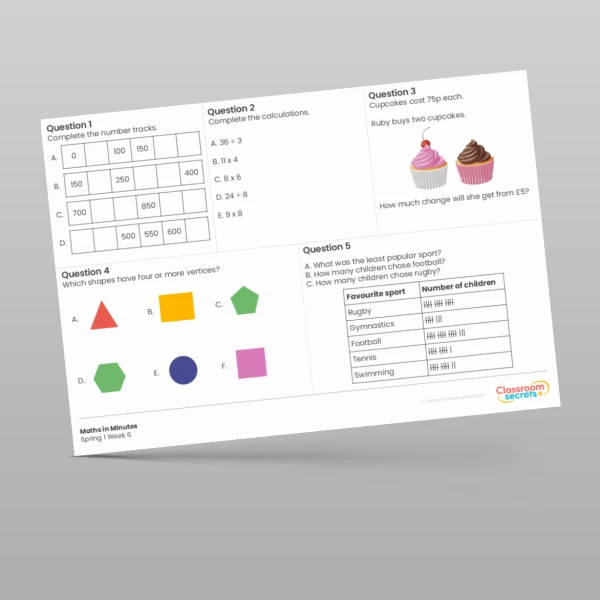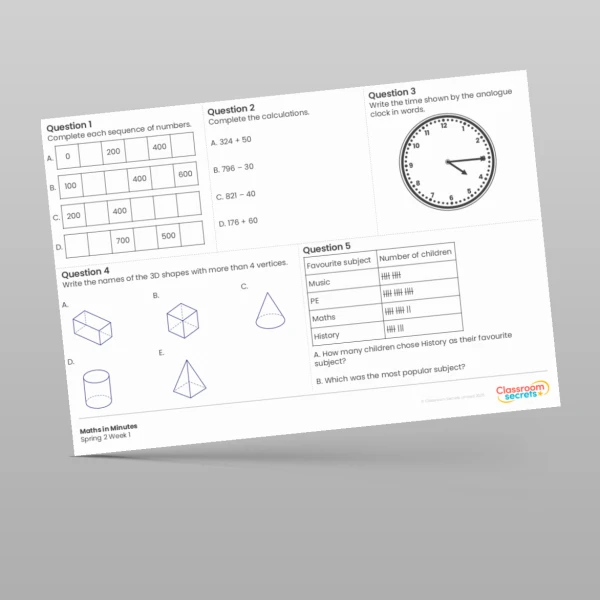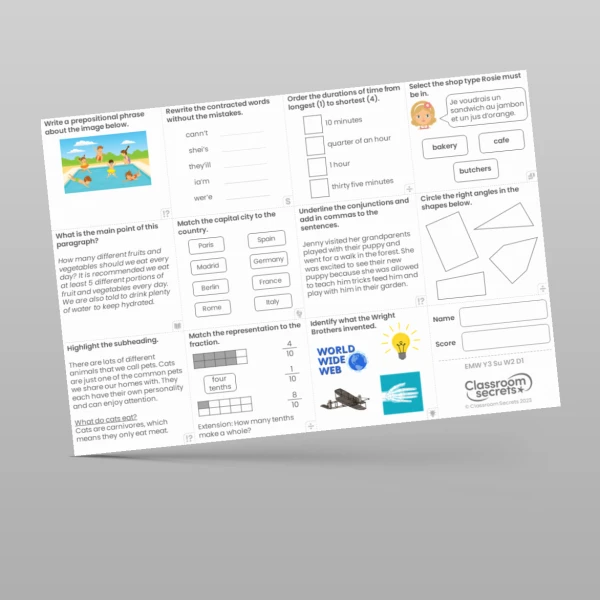

Revisit and revise previously taught objectives with this Year 3 Maths in Minutes resource. There are three sets of questions which cover a range of maths skills including number, measure, geometry and statistics. We've specially designed this resource to be displayed on the interactive whiteboard so there's no need to print! It's ideal to use during registration, at the start of a maths lesson or whenever you have some time to spare. Download now!
Curriculum Objectives
- Recognise and use symbols for pounds (£) and pence (p); combine amounts to make a particular value
- Solve simple problems in a practical context involving addition and subtraction of money of the same unit, including giving change
- Compare and sort common 2-D shapes and everyday objects
- Identify 2-D shapes on the surface of 3-D shapes, [for example, a circle on a cylinder and a triangle on a pyramid]
- Use mathematical vocabulary to describe position, direction and movement, including movement in a straight line and distinguishing between rotation as a turn and in terms of right angles for quarter, half and three-quarter turns (clockwise and anticlockwise)
- Interpret and construct simple pictograms, tally charts, block diagrams and simple tables
- Ask and answer simple questions by counting the number of objects in each category and sorting the categories by quantity
- Count from 0 in multiples of 4, 8, 50 and 100
- Compare and order numbers up to 1000 / Read and write numbers up to 1000 in numerals and in words
- Add and subtract numbers with up to three digits, using formal written methods of columnar addition and subtraction
- Solve problems, including missing number problems, involving multiplication and division, including positive integer scaling problems and correspondence problems in which n objects are connected to m objects
- Recognise, find and write fractions of a discrete set of objects: unit fractions and non-unit fractions with small denominators
- Recognise and use fractions as numbers: unit fractions and non-unit fractions with small denominators
- Recognise and show, using diagrams, equivalent fractions with small denominators
- Add and subtract amounts of money to give change, using both £ and p in practical contexts
Tags
Spring
2M3a
2M9
2G1a
2G3
2P2
2S1
2S2a
3N1b
3N2a
3C2
3C8
3F1b
3F1c
3F2
3M9a
Maths in Minutes











